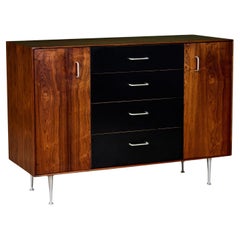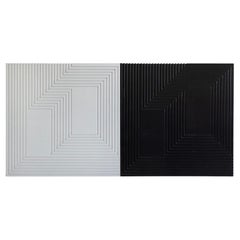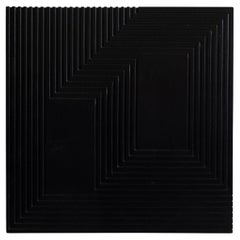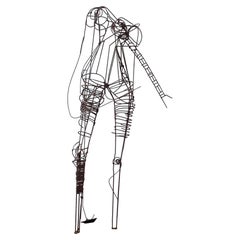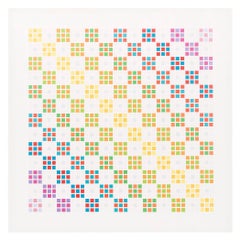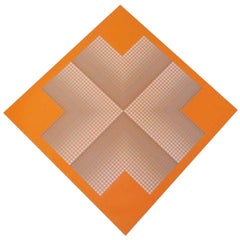Craig Ellwood Furniture
Rarely have rectangular boxes looked as elegant as in the mid-century modern homes designed by Craig Ellwood Associates of Los Angeles.
Unabashedly influenced by the work of Bauhaus visionary Ludwig Mies van der Rohe, Ellwood’s houses were long, low and strong boned, made of steel beams and expanses of glass. Dramatically sited on oceanfront properties or in eucalyptus groves, they gave the borrowed architectural formalism of European modernism a distinctly California flavor.
A local legend in his time, Ellwood is not as well known today as Richard Neutra, Charles and Ray Eames, Albert Frey or any number of postwar architects working in Southern California, although his office designed more than 100 buildings from the late 1940s through the mid-1970s. Several were Case Study Houses, part of an experimental building program sponsored by Arts + Architecture magazine that was intended to encourage the use of industrial materials and techniques for residential construction — a commonplace now but revolutionary then.
Born in Texas, Johnnie Burke (Ellwood’s given name) was a World War II army vet, a student of engineering at UCLA and a male model when he took a night class in construction cost estimating.
“The next thing he knows, he’s working on the Eames Case Study House and John Entenza’s house next door,” says Michael Boyd, referring to the editor and publisher of the influential Arts & Architecture magazine, who became a champion of Ellwood’s work. “That’s where he learned the grammar of form.”
Boyd, a designer and preeminent modernism-preservation specialist, edited Making L.A. Modern: Craig Ellwood (Rizzoli, 2018), which aimed to give Ellwood’s impressive body of work its due.
Burke soon reinvented himself as Craig Ellwood. Accolades rolled in for the designer even as he never earned a license to practice architecture. The fact that a self-taught practitioner was responsible for so many important postwar buildings didn’t sit well with the architectural establishment.
By the late 1960s, things had changed for Ellwood. Unable to get commissions and tossed out of his own firm by disgruntled partners who felt cheated of proper credit, he retired to a farmhouse in Tuscany, and, for the next two decades, turned out abstract geometric paintings in a vivid Op Art mode.
Find vintage Craig Ellwood furniture on 1stDibs.
1950s American Mid-Century Modern Vintage Craig Ellwood Furniture
Aluminum
1970s American Vintage Craig Ellwood Furniture
Masonite, Plywood
1970s Vintage Craig Ellwood Furniture
Masonite, Plywood
1970s American Vintage Craig Ellwood Furniture
Masonite, Plywood
1970s Italian Mid-Century Modern Vintage Craig Ellwood Furniture
Canvas, Acrylic
1970s American Folk Art Vintage Craig Ellwood Furniture
Iron, Wrought Iron
1960s North American Mid-Century Modern Vintage Craig Ellwood Furniture
Paper
Mid-20th Century Craig Ellwood Furniture
Paper
1970s Korean Chinoiserie Vintage Craig Ellwood Furniture
Silk, Paint
1950s American Mid-Century Modern Vintage Craig Ellwood Furniture
Metal
1940s American Mid-Century Modern Vintage Craig Ellwood Furniture
Canvas
Mid-20th Century American Mid-Century Modern Craig Ellwood Furniture
Walnut
Early 2000s American Craig Ellwood Furniture
Leather
Mid-20th Century North American Mid-Century Modern Craig Ellwood Furniture
Walnut
1960s American Mid-Century Modern Vintage Craig Ellwood Furniture
Wood, Rosewood
1990s American Craig Ellwood Furniture
Canvas, Paint
20th Century North American Modern Craig Ellwood Furniture
Alabaster, Stainless Steel
1970s American Modern Vintage Craig Ellwood Furniture
Paint, Canvas
1970s American Mid-Century Modern Vintage Craig Ellwood Furniture
Paper
